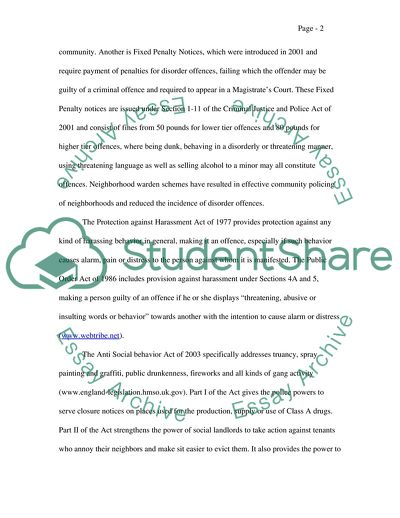Cite this document
(Anti Social Behavior Case Study Example | Topics and Well Written Essays - 2000 words, n.d.)
Anti Social Behavior Case Study Example | Topics and Well Written Essays - 2000 words. Retrieved from https://studentshare.org/law/1710450-outline-and-evaluate-the-main-criticisms-that-have-been-made-of-the-key-laws-policies-and-methods-introduced-by-central-government-since-1997-to-combat-anti-so
Anti Social Behavior Case Study Example | Topics and Well Written Essays - 2000 words. Retrieved from https://studentshare.org/law/1710450-outline-and-evaluate-the-main-criticisms-that-have-been-made-of-the-key-laws-policies-and-methods-introduced-by-central-government-since-1997-to-combat-anti-so
(Anti Social Behavior Case Study Example | Topics and Well Written Essays - 2000 Words)
Anti Social Behavior Case Study Example | Topics and Well Written Essays - 2000 Words. https://studentshare.org/law/1710450-outline-and-evaluate-the-main-criticisms-that-have-been-made-of-the-key-laws-policies-and-methods-introduced-by-central-government-since-1997-to-combat-anti-so.
Anti Social Behavior Case Study Example | Topics and Well Written Essays - 2000 Words. https://studentshare.org/law/1710450-outline-and-evaluate-the-main-criticisms-that-have-been-made-of-the-key-laws-policies-and-methods-introduced-by-central-government-since-1997-to-combat-anti-so.
“Anti Social Behavior Case Study Example | Topics and Well Written Essays - 2000 Words”. https://studentshare.org/law/1710450-outline-and-evaluate-the-main-criticisms-that-have-been-made-of-the-key-laws-policies-and-methods-introduced-by-central-government-since-1997-to-combat-anti-so.


